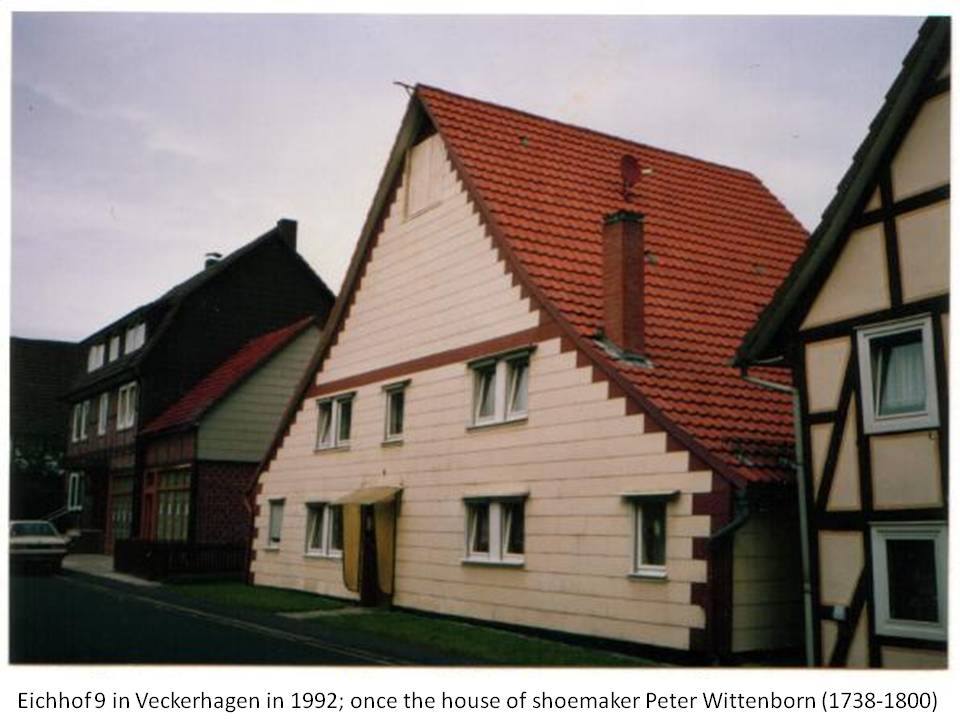The house of Peter Wittenborn (1738-1800), the shoemaker of Veckerhagen
Posted on Facebook on 30 October 2015. When I got back to our holiday home (see my earlier post) I found that a leaflet from the Tourist Information mentioned Thomas Ende, a local historian. I cycled to his house. While opening the door, Thomas recognised me, as he and his mom had seen me look attentively at the church an hour before. When I left Thomas' house, I had in my arms the Xerox-copied church registers of Veckerhagen, from 1643 to 1800, 6 rather heavy books. Being on holiday with my pregnant wife and 1 year old son, I could only start reading once my wife had gone to bed. So I did. After a while the bed room door was opened. I asked my wife if she had trouble falling or staying asleep. She stared at me. "Toon, it is 8 'o clock in the morning!" I made sure my wife and son had a good, active day and resumed reading at about 9 pm. I closed the confession register, the last book, by 2 am and went to sleep, very, very happy, and in the company, as it felt , of many people I had come to know very well. When I returned the church registers to Thomas, he and his mother invited me to come over in the afternoon and have waffles with them. We talked about many interesting things. They gave me the 1978 calender issued by the historical society of Veckerhagen. The picture for April, dated around 1910, was Eichhof 9, shoemaker Peter Wittenborn's house. Of course I took a picture of the house in its present (1992) state. Peter Wittenborn was the only child of Hans Christof, my ancestor Hans Martin's older brother, who reached age 10. Only 2 of his own 8 children reached ago 10, and did not let the family name live on in Veckerhagen. Still, seeing Peter's house for myself made my own ancestors come alive. They had left a trace, if only that they must have visited their nephew in this house and probably had their shoes repaired by him. My ancestors weren't rich. The rich people lived in the center of Veckerhagen, in the still perfectly maintained "vakwerk" houses, most of them dating back to between 1700 and 1800.


